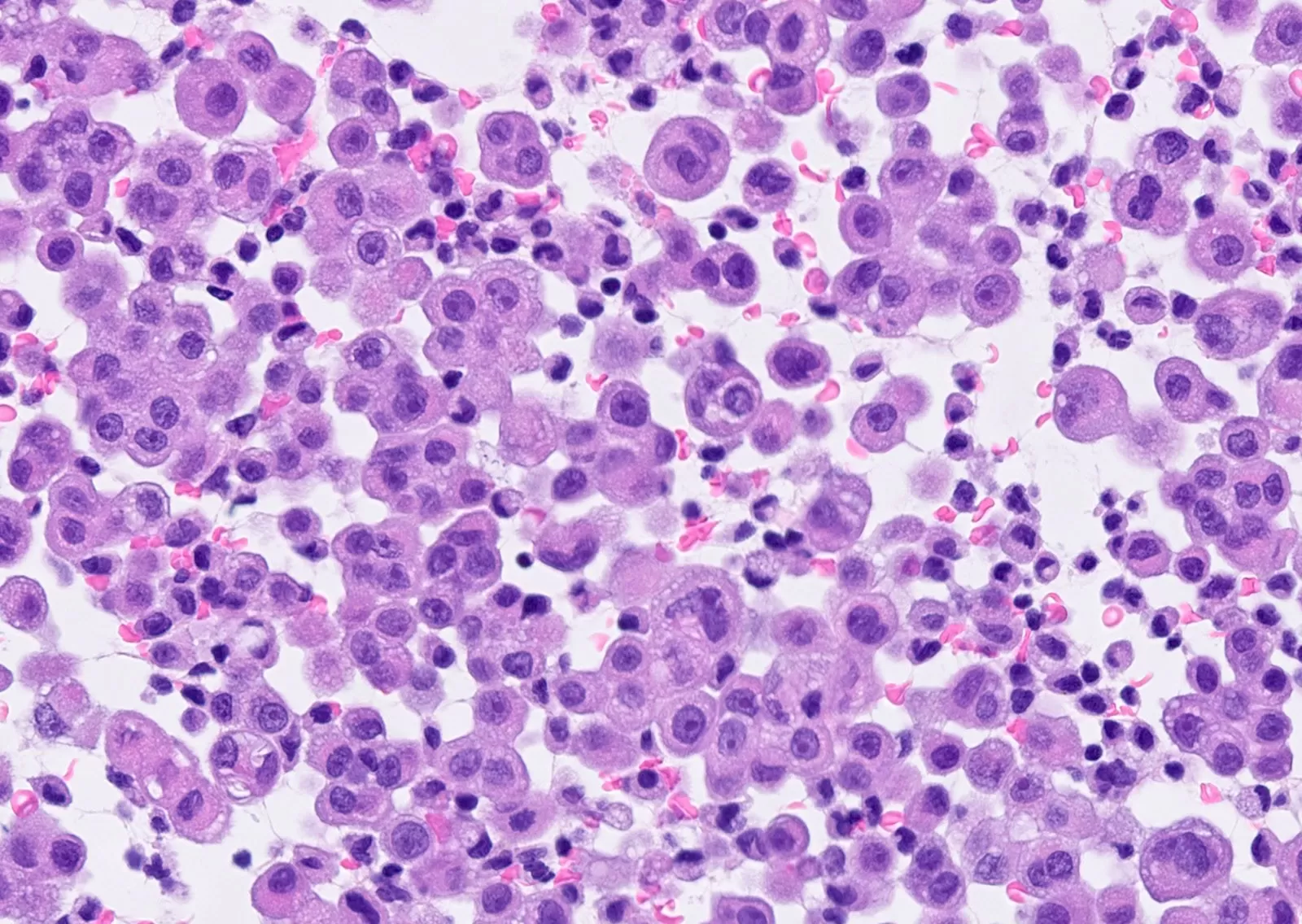Malignant mesothelioma is a rare and aggressive cancer primarily linked to asbestos exposure. It originates from mesothelial cells, which form the lining of body cavities. The most common form is malignant pleural mesothelioma, affecting the pleural layer of the lungs. This article provides an in-depth look at the etiology, pathophysiology, epidemiology, and treatment of malignant mesothelioma, highlighting the critical role of an interprofessional healthcare team in managing the disease.
Pathophysiology and Etiology
- Asbestos Exposure: The primary cause of malignant pleural mesothelioma is asbestos exposure, which leads to repeated pleural inflammation and cellular changes. Specific asbestos types, such as amosite and crocidolite, are most strongly associated with the disease. Other potential factors include ionizing radiation and genetic mutations, such as BRCA1-associated protein (BAP1) mutations.
- Genetic Susceptibility: Certain genetic changes, including the loss of chromosome 22 and deletions in chromosomal arms 3p, 1p, 6q, and 9p, may increase susceptibility to mesothelioma.
- Subtypes: There are three histological subtypes of mesothelioma: epithelioid (associated with better outcomes), sarcomatoid, and mixed.
Epidemiology
- Incidence: Approximately 2,500 new cases are diagnosed annually in the United States, with a median survival of about one year. The disease predominantly affects males over the age of 50, with an average age of diagnosis at 72. A history of asbestos exposure typically precedes diagnosis by 20-40 years.
- Global Variability: Incidence rates vary globally, with higher rates in countries like China where asbestos use remains prevalent.
Clinical Presentation and Diagnosis
- Symptoms: Common symptoms include chest pain, dyspnea (often due to pleural effusion), unintentional weight loss, fatigue, and cough.
- Diagnostic Workup: Diagnosis involves imaging techniques such as CT scans and PET scans, as well as thoracoscopic pleural biopsy and thoracentesis. Distinguishing mesothelioma from other conditions like lung adenocarcinoma is crucial.
- Biomarkers: Megakaryocyte potentiating factor can serve as a serum biomarker for malignant pleural mesothelioma.
Treatment and Management
- Surgical Options: Surgery is considered for early-stage disease. Options include pleurectomy/decortication (P/D) or extrapleural pneumonectomy (EPP). EPP involves resection of the pleura, lung, pericardium, and diaphragm but is controversial due to high mortality rates.
- Chemotherapy: Platinum-based chemotherapy, often using cisplatin, is the primary treatment for unresectable disease, though mesothelioma is generally resistant to chemotherapy. The combination of gemcitabine and cisplatin shows limited efficacy.
- Radiation Therapy: Radiation is primarily used for palliation rather than survival improvement.
- Multidisciplinary Approach: Effective management requires a multidisciplinary team, including oncologists, thoracic surgeons, and other specialists, to address the complex needs of patients.
Staging and Prognosis
- Staging:
- Stage I: Localized within the parietal pleura without lymphadenopathy.
- Stage II: Positive margins post-resection, possible intrapleural lymphadenopathy.
- Stage III: Local invasion into mediastinum, pericardium, or chest wall with common lymphadenopathy.
- Stage IV: Distant metastatic disease.
- Prognosis: The prognosis is poor, with most patients surviving only 4 to 6 months without treatment. With treatment, survival may extend to 15-18 months, but long-term survival is rare. Tumor recurrence is common, especially post-surgery.
Complications and Postoperative Care
- Surgical Complications: Surgery can result in significant complications, including myocardial infarction, respiratory failure, and wound infection.
- Chemotherapy Side Effects: Chemotherapy can lead to pancytopenia and renal failure.
- Rehabilitation: Patients often require rehabilitation and nutritional support post-treatment, with home oxygen being necessary for many.
Interprofessional Team Role
The management of malignant mesothelioma demands an interprofessional healthcare team, emphasizing the importance of care coordination to improve patient outcomes. Treatment at high-volume centers by specialized teams is recommended, and many patients may benefit from palliative or hospice care due to the advanced stage at diagnosis.
Conclusion
Malignant mesothelioma remains a challenging and lethal cancer with limited treatment success. Despite ongoing research and efforts to improve management, the prognosis remains grim, underscoring the need for continued advancements in diagnosis and therapy.

Medical oncologist Dr. Anne Wolf is director of the Mesothelioma Program and chair of the Clinical Research Committee at the University of Texas MD Anderson Cancer Center in Houston.


Absolutely indited subject material, Really enjoyed reading.
Keep up the fantastic work! Kalorifer Sobası odun, kömür, pelet gibi yakıtlarla çalışan ve ısıtma işlevi gören bir soba türüdür. Kalorifer Sobası içindeki yakıtın yanmasıyla oluşan ısıyı doğrudan çevresine yayar ve aynı zamanda suyun ısınmasını sağlar.
buy priligy cheap The primary finding from this series of experiments is that substantial sodium removal via the peritoneal membrane is feasible
Magnificent website. Plenty of helpful info here. I am sending it to some buddies ans additionally sharing in delicious. And certainly, thanks for your sweat!
Hi there! This post couldn’t be written any better! Reading through this post reminds me of my previous room mate! He always kept talking about this. I will forward this article to him. Pretty sure he will have a good read. Thank you for sharing!